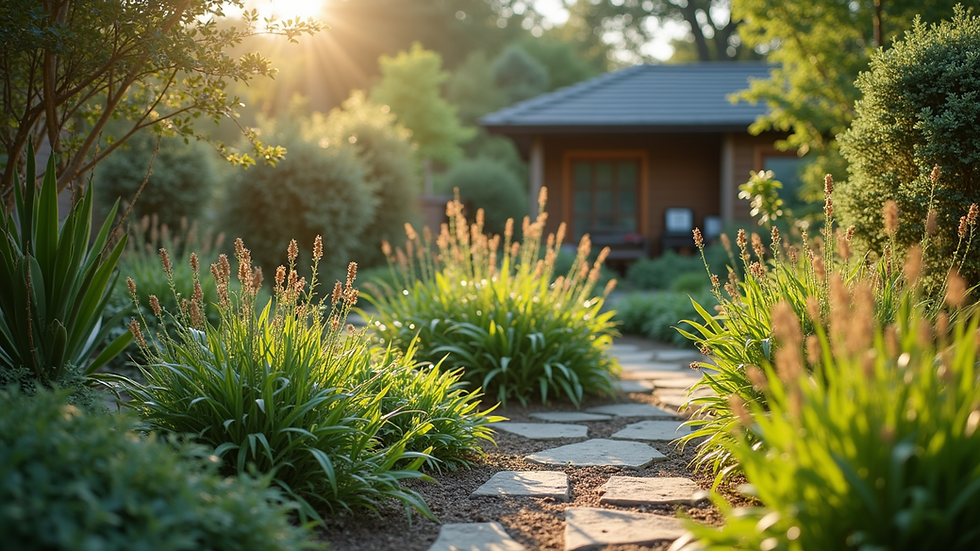Cost-Effective Strategies for Sustainable Green Building on a Budget
- 4 days ago
- 4 min read
Sustainability is more than just a buzzword; it's a vital approach to combatting the environmental challenges we face today. As cities expand and climate change becomes an urgent issue, sustainable building practices have gained traction. However, there is a prevailing notion that going green comes with a hefty price tag. This post seeks to challenge that idea by offering effective, budget-friendly strategies for sustainable building.
Green building is not merely a choice; it's essential for our future. Growing interest in eco-friendly materials, along with increased regulations for lowering carbon footprints, makes this the perfect time to adopt cost-effective solutions in construction. This article provides actionable insights to help you achieve sustainability without compromising your budget.
Understanding Green Building
Green building is the process of designing and constructing buildings that effectively minimize their environmental impact while promoting occupant health. This practice encompasses the entire lifecycle, including planning, design, construction, operation, maintenance, and eventual demolition.
Key principles of green building include:
Energy Efficiency: Reducing energy consumption through thoughtful design.
Water Conservation: Using methods that save water and reduce waste.
Sustainable Materials: Choosing materials that are renewable or recycled.
Implementing these principles not only benefits the environment but also results in long-term savings. Studies show that green buildings can reduce energy use by up to 30 percent, translating into significant cost savings over time.
The Growing Interest in Sustainable Materials
Increased awareness of environmental issues has led to a surge in the popularity of sustainable materials. These are sourced and manufactured in ways that minimize their carbon footprint.
For example:
Bamboo Flooring: Using bamboo can save trees and limit deforestation. Bamboo grows fast, making it a renewable resource.
Recycled Steel and Reclaimed Wood: These options reduce waste and lessen the need for new materials, lowering both environmental impact and costs.
As technological advancements continue, many sustainable materials are becoming more affordable. For instance, the average cost of recycled materials can be as low as 10 to 15 percent less than new products, making green choices more accessible.

Cost-Effective Design Strategies
Design is a critical element in achieving sustainable building within budget constraints. Here are some effective strategies to consider:
1. Optimize Natural Light
Incorporating large windows, skylights, and open floor plans can reduce reliance on artificial lighting. Statistics reveal that well-designed daylighting can lower energy costs by as much as 20 percent. Position your windows to capture maximum sunlight and use light colors in your design to enhance brightness without increasing electricity use.
2. Implement Passive Solar Design
Passive solar design captures the sun's energy for heating and cooling without needing mechanical systems. For example, orienting a building to face the sun can boost natural warmth during colder months, cutting heating costs by up to 40 percent.
3. Choose Energy-Efficient Appliances
While energy-efficient appliances often have a higher initial cost, they save significant amounts of money over time. For example, ENERGY STAR certified appliances can reduce energy consumption by 10 to 50 percent compared to standard models, which lowers utility bills substantially.
4. Use Insulation Wisely
Effective insulation keeps spaces comfortable while minimizing energy use. Quality insulation can cut heating and cooling expenses by 15 to 25 percent. Options such as cellulose, made from recycled paper, or sheep's wool provide eco-friendly alternatives without sacrificing performance.
Understanding Regulations and Incentives
Navigating regulations and incentives is crucial for budget-friendly green building. Many governments offer guidelines and financial incentives that can ease the burden of costs.
1. Research Local Building Codes
Familiarize yourself with local regulations. Many municipalities promote sustainable practices and offer guidelines that can help you avoid costly missteps. Some codes may even provide pathways for faster permitting.
2. Take Advantage of Incentives
Check for financial programs, like tax credits, that are available for green building projects. For instance, homeowners installing solar panels may qualify for tax credits covering a percentage of the installation cost, which can significantly offset expenses.
Sustainable Landscaping
Sustainable landscaping is often overlooked, yet it significantly contributes to a building's overall sustainability. Thoughtful landscaping can improve biodiversity and reduce water use.
1. Choose Native Plants
Opting for native plants can enhance sustainability while lowering maintenance costs. Native species require less water and are better adapted to local conditions, reducing irrigation needs by as much as 50 percent.
2. Implement Rainwater Harvesting
Setting up a rainwater harvesting system can dramatically cut water bills. A simple rain barrel can provide an inexpensive source for irrigation and may supply up to 1,300 gallons of water per year, depending on rainfall.
Collaborating with Professionals
Working with integrative professionals can streamline the building process and ensure cost-effectiveness. Here are some tips:
1. Hire a Green Architect or Designer
Engaging a green architect can lead to a well-designed building plan that meets budget constraints. Their expertise can result in long-term savings by recommending efficient materials and designs.
2. Consult with Experienced Contractors
Select contractors who are knowledgeable about sustainable building practices. Their experience can lead to innovative cost-saving measures that keep your project on track.
3. Foster Open Communication
Maintaining clear communication with your team is vital. Regular updates can ensure alignment and prevent costly delays while addressing any potential challenges.
Embracing Sustainable Building Strategies
Achieving a sustainable building on a budget is not just feasible; it's essential for our future. By utilizing cost-effective strategies, selecting sustainable materials, and collaborating with qualified professionals, you can create an eco-friendly building that meets both your needs and financial goals.

As interest in green building increases, staying informed about related trends and assistance programs will augment your project's success. Effective planning and execution can foster a sustainable environment while proving that embracing green practices doesn't have to strain your finances.
Incorporating these practical strategies into your building plans will contribute to a healthier planet and a more sustainable future for generations to come. Every small step counts, and with the right approach, you can make a meaningful impact without overspending.







Comments